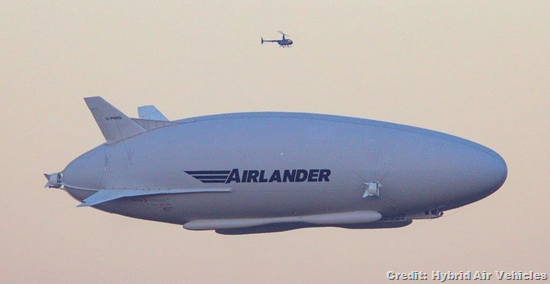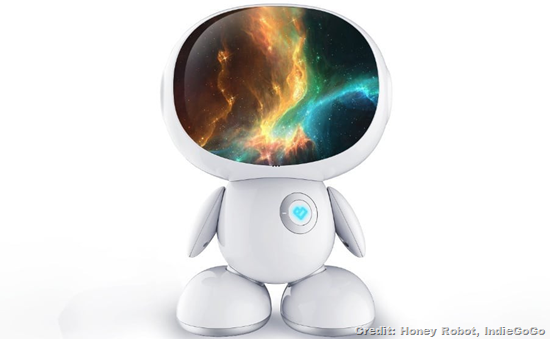
An artificial wave lagoon, a robotic caterpillar and a "star in a jar" top off this week's tech gallery.
1. Artificial Wave Lagoon
The Wave Park Group, a Perth, Australia-based company, recently presented a proposal to the city of Melville to turn an existing 54-acre sports and recreation destination into a wave park. The wave lagoon itself would occupy 5.7 acres and become the third park of its kind in the country.
2. Winning Solar Car
This year, University of Michigan’s solar-powered car, the Aurum, won the American Solar Challenge race, finishing 11 hours ahead of the second placed car. The eight-day race began at Cuyahoga Valley National Park in Ohio and finished at Wind Cave National Part in North Dakota.
3. Airlander 10 Crashes
What a bummer. After only 100 minutes of test flying, the world’s largest aircraft, Airlander 10, crashed during its second test run. No one was hurt, but the incident certainly delays Hybrid Air Vehicles’ attempt to build a helium-filled cargo ship capable of transporting 22,000-pound shipments around the world.
4. Fast-Flying Drone
Drone-maker Parrot’s new device, the Disco, is meant for people who just want to have fun. The ultralight 1.6-lb drone can fly 50 mph for 45 minutes at a time. Other drones peter out after 20 to 25 minutes.
5. Star in a Jar
Plans for a next generation fusion device were revealed this week in the journal Nuclear Fusion. The research comes from physicists at the U.S. Department of Energy’s Princeton Plasma Physics Laboratory, and the plans include a US$94 million investment in the National Spherical Torus Experiment-Upgrade (NSTX-U), a giant fusion reactor that generates energy in a way similar to how stars like our own sun generate energy. Fusion involves subjecting hydrogen atoms to extreme heat and pressure until they fuse into helium atoms. The process creates energy that could be used to power just about everything in the world. Unlike fission, fusion doesn’t create giant amounts of radioactive waste either.
6. Lego-like Proteins Produce Colour Images
By modifying tiny particles that naturally occur in cells, scientists found a way to improve upon ultrasound imaging. The particles are protein-shelled, gas-filled structures called gas vesicles. Caltech scientists developed ways to swap out the proteins on the surface like Legos to get the particles to behave in different ways.
For example, one protein causes the vesicle to attach to a certain kind of tissue cell, say a tumour cell. The scientists also figured how to alter the gas inside so that when an ultrasound image is taken, the particles show up in different colours. The technique could greatly improve a doctor’s ability to pinpoint the location of cancerous cells and target them for removal.
7. Bowl-shaped Stadium Naturally Cools
In Dubai, summer temperatures reach upwards of 120 degrees Fahrenheit. Building a soccer stadium that can accommodate 60,000 and keep them cool is no small matter in that kind of heat. Instead of relying on air conditioning to do the job, architects Perkins + Will are designing the Mohammed bin Rashid Stadium with passive cooling features. For starters, the exterior will be made of perforated metal skin that allows air to pass through but keeps out blowing sand. Overhead, a translucent teflon-coated glass awning will reflect 75 percent of sunlight. Beneath the stadium, a large pool of water will cool the air and trees planted on the grounds will block hot winds.
8. Soft Robo-Caterpillar Wriggles
This 0.6-in-long soft robotic caterpillar is made from a material called liquid crystal elastomer, which when shined with a light, moves in different ways. By using a modulated laser beam, scientists at the University of Warsaw were able to make this robotic caterpillar walk up slopes, squeeze through narrow spaces and even push objects that weighed 10 times its own weight.
9. Dyson’s Latest Fan
Dyson’s newest bladeless fan, the Pure Hot+Cool Link, is able to trap 99.97 percent of the smallest airborne particles. Pollen, mould and bacteria are no match for the fan’s 360-degree Glass HEPA filter. The app-controlled device, which also cools and heats the air, can be ordered online starting September 6 for US$599.99.
10. Honeybot Teaches with VR
A new robot being promoted as part of an IndieGoGo project is an interactive, Android-based robot that uses 3-D augmented reality to teach and entertain kids ages 3 to 8 years old. Called Honeybot, the device - designed by Chinese tech company Hui Yu - is meant to snag a child’s attention with its 3-D graphics, image and voice recognition and 200 audio and video programs.
Top image: Rendering of the Mohammed bin Rashid Stadium in Dubai. Credit: Perkins + Will via Designboom.









No comments:
Post a Comment
Please adhere to proper blog etiquette when posting your comments. This blog owner will exercise his absolution discretion in allowing or rejecting any comments that are deemed seditious, defamatory, libelous, racist, vulgar, insulting, and other remarks that exhibit similar characteristics. If you insist on using anonymous comments, please write your name or other IDs at the end of your message.